PSIU Assessments are an innovative workstyle assessment method based on first principles. PSIU Assessments can help you do a number of things.
First, they can help you to quickly identify the role fit, communication style, and engagement level of current employees, partners, and clients.
Second, they will reveal the potential role fit and motivations of prospective new hires.
Third, they will help you to form up and manage high-performing pods or cross-functional teams.
Each membership tier includes a number of annual PSIU Assessment credits included in your program.
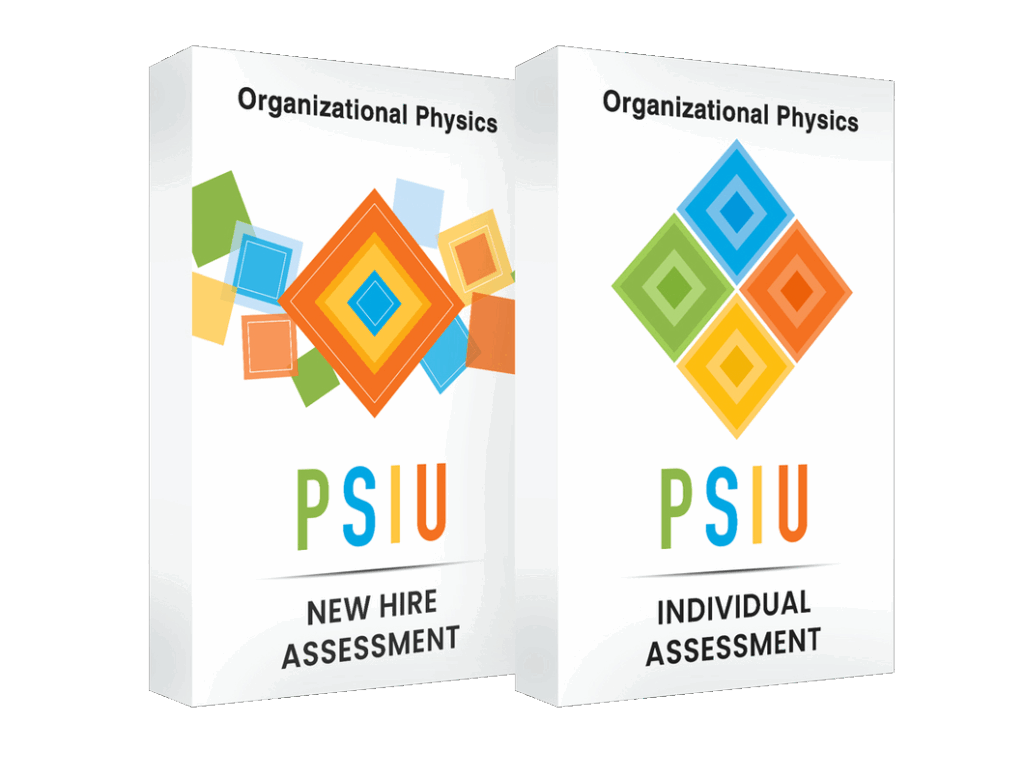
If you manage people or projects, I don’t need to tell you that your job is challenging. You have finite time and energy each day to try to get the best from your direct reports and teams. You also need to make smart hiring decisions. So how do you do it?
If you’re an experienced manager, you already try to align people into roles that play to their strengths and passions. But if you’re honest, you’ll also admit that accomplishing this feat in an ever-changing work environment is easier said than done.
If I told you there was a simple, accurate, and cost-effective tool to better understand your staff and hire great talent, would you want to learn how? If your answer is “Yes!” – like most of my CEO clients – then here’s something you’ll want to know about…
What I’m sharing with you is one of the most powerful breakthrough tools I’ve learned in my career as an entrepreneur and organizational coach. It’s the foundation for much of the work I do with my clients and I’ve seen it deliver amazing turnarounds over and over.
This breakthrough tool is called the PSIU Talent Management Suite – a suite of online style assessments and actionable reports that are faster, simpler, and more applicable to real-world business settings than traditional psychological tests.
The PSIU Talent Management suite gives you easy access to everything you need to assess the work styles of your current staff and teams – and then match them to the right roles where they can thrive.
You will boost team-wide productivity and job satisfaction, as well as address any gaps through specific and actionable steps. You will also master the process of making consistently great hires, easily identifying your candidates’ strengths, weaknesses, working style, blind spots, and more – so you can choose only the right talent for your organization.
This section explains the methodology, benefits, and strategic use cases, showing how the assessment identifies individual work styles and role fit to improve communication and performance across your organization.
Have a specific question about PSIU Assessments or other Pro Tools?
Traditional style or type indicators, most of which were created mid-last-century, attempt to explain the psychological underpinnings of why a person behaves the way they do. While this may be a fascinating area of study and self-reflection, from a management perspective, who cares?
Think about it. Does it really help you to know if your VP of Sales is an INTJ or an ISFP Myers-Briggs Type? Can you even remember what those damn letters mean? From a management perspective, what you really want to know is whether your VP of Sales has a style match for what you need in the role now (this changes based on the lifecycle stage of your business and existing team dynamics) and if he or she is happy and productive in that role. If not, you want to know what to actually do about it.
Or, if you’re in the market to hire a new CFO and you get a Big Five personality profile that tells you how extroverted-agreeable-conscientiousness-neurotic-or-open a candidate is, can you use that information to tell if a candidate is a strong fit for the CFO job and accurately compare him or her to the ideal type and to other candidates? Not really? I thought so. Especially since most of us would prefer working with agreeable and conscientious people, as opposed to neurotic ones. So how does that actually help you decide if someone is a good fit for a specific job in your company?
Perhaps you’re leading a team on a mission-critical project. If you gave each team member a Strengths Finder assessment, you could easily pick out one or two members who would rate as “strong” in leading a team. OK. Now how would you use that information to create a high-performing team of complementary styles in a way that’s easy and scalable?
Notice too that having a list of individual strengths does NOT allow you to also predict what to expect from the team in advance — to anticipate your team’s work effort, quality, shortcomings, and chemistry. If you can’t easily get a complete picture of the total team makeup and predict its performance in advance – as well as what adjustments to make when things get off track – then you’re managing at a serious disadvantage.
So while the academic and testing community may debate the efficacy and applications of the MBTI (Myers-Briggs Type Indicator), DISC (DISC Assessment), MMPI2 (Minnesota Multiphasic Personality Inventory-2), PI (Predictive Index), Enneagram, Strengths Finder, or the MVPI (Motives, Values & Preferences Inventory) — “Hey Alex, can I buy an acronym?” — from a business management perspective you would be better off with a different approach.
What kind of approach? Well, it needs to be fast. It needs to be accurate. It needs to be easy to communicate, remember, and apply for everyone in your organization. It needs to be universally applicable and work across geographic and cultural boundaries so that your staff in Shanghai and in New York are all on the same page. It should encourage a diversity of styles rather than promote one style as the best. It must be predictive. Finally and most importantly, it needs to focus your attention on any gap between what is and what is desired – and show you what to do about it.
There is a better way for business managers to assess individual and team styles and to make smarter hires – and to use that information to create breakthrough levels of performance. Like I said, it doesn’t come from the halls of academic psychology theory but from an entirely different field: systems theory.
Systems theory is the study of how things work as wholes. Unlike a traditional approach that dissects things into ever-smaller pieces to be studied, a systems thinker determines how things work by observing the whole system in action, including its parts and interconnections with the environment.
From a systems perspective, rather than trying to get inside an individual’s mind to figure out their psychological motivation and the workings of their internal landscape, we simply identify or assess how an individual or a team behaves. And with that, we will have a lot of useful information that we can understand and apply within this powerful framework.
The framework I’m going to teach you is an Adaptive Systems Model. I describe this framework in depth in my book Organizational Physics: The Science of Growing a Business. There I show that there are four basic dimensions that underlie the behavior of complex adaptive systems (you, your relationships, your organization, etc.).
These four dimensions are based on a simple and profound observation: At the most basic level, every individual or organization has finite energy in time and therefore, must shape and respond to the environment and do so while managing its whole self, including its parts. Remember those concepts: shape, respond, whole, and parts.
Why is this so? Because if an individual or organization fails to manage the complexities of its environment, it will fail — just as if would die if you were stranded on a desert island with no food or water, or a business would go bankrupt if customers stopped buying its products and services.
You can begin to visualize this adaptive systems model like this (and hang in there – it’s easy to miss its significance at first):
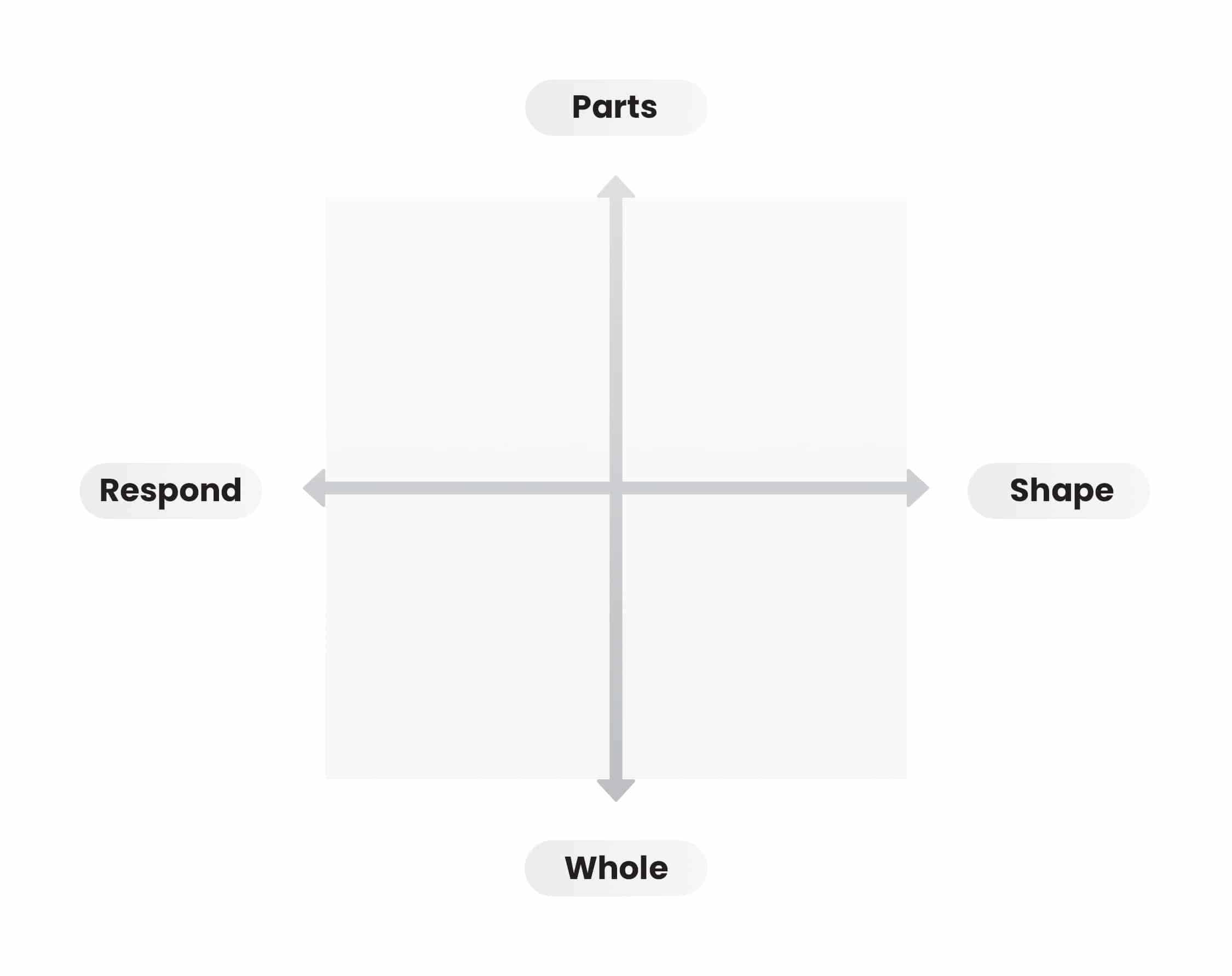
Am I really saying that 2 lines and 4 words provide the basis for an entirely new approach to assessing behavior? One that is on par with or better than the classic approaches to style typing, and superior for fast-paced business environments? Yes!
Once you know what to look for, it’s easy to spot certain types of behavior using this model and infer the implications. Just think about your own life and work for a moment. For instance, how did you spend the past week?
Chances are that you spent some time and energy expressing all of these dimensions in your life and work in the past week, but one or two of them more than the others. And this is true for everyone.
Now let’s complete the picture and fill in the quadrants. Spend a moment taking in this map:

The language we use to describe each of the quadrants is “PSIU,” which stands for the Producing, Stabilizing, Innovating, and Unifying forces:
Because every person or team expresses varying degrees of the drives to shape and respond to change while managing the whole and the parts of the systems they influence, this means that every individual or team expresses their own unique combination of the Producing, Stabilizing, Innovating, and Unifying forces. And these are what give rise to observable behavior.
A work style, simply put, is a mode of operating in the world that reflects a unique combination of the Producing, Stabilizing, Innovating and Unifying forces, or how we tend to manage the world around us. Most of us express all of these forces at one time or another, but one or two of them usually come to us most naturally. We refer to the styles as the Producer, the Stabilizer, the Innovator, and the Unifier – or PSIU.

When we code an individual’s style, we use capital letters to represent the dominant styles: for example, “PsIu” represents a person whose profile displays Producing and Innovating as the dominant forces.
The image below takes the previous matrix mapping organizational forces and translates them into styles. Here you will see how each force defines the pace, approach, viewpoint, and orientation of each of the four primary styles:
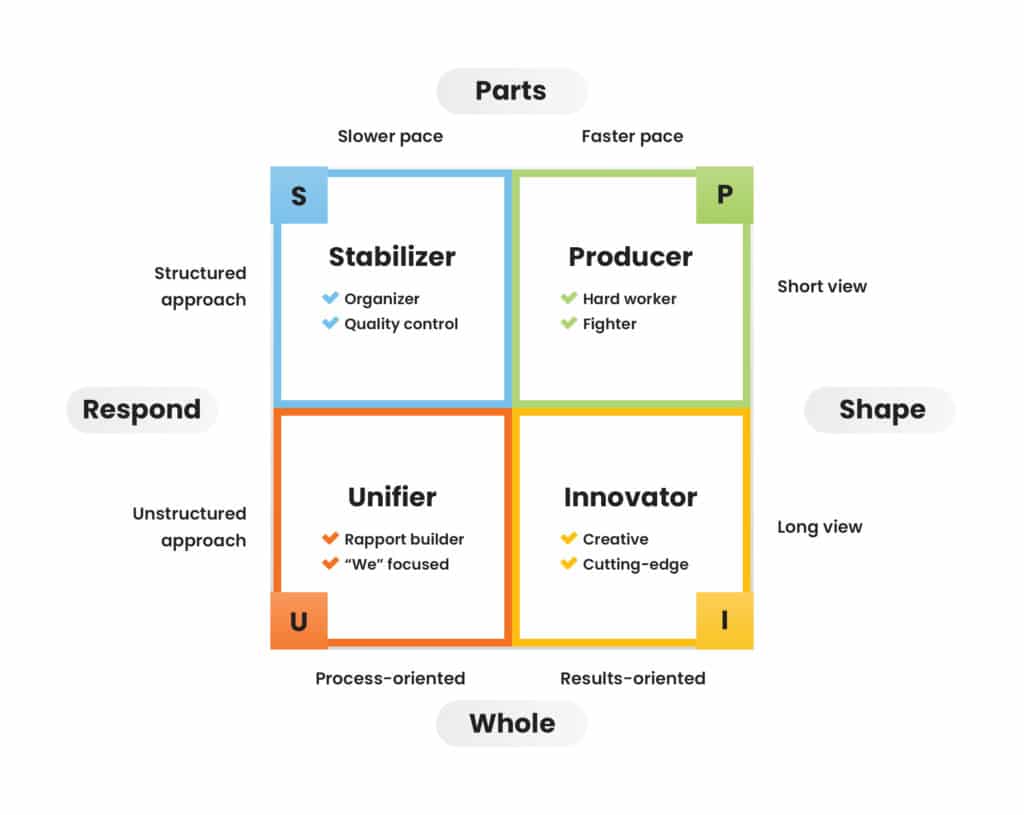
Now take a look at the descriptions below and see if you can identify yourself and the people closest to you:
The Producer
As we already know, the Producing force (P) has a high drive to shape the environment and is focused on managing the parts that make up the system. Thus, the Producer moves at a fast pace, takes a short-term view, is results-oriented, and follows a structured approach. The Producer is focused on what to do now and working hard to get it done quickly.
To get an immediate sense of the Producer’s qualities, think of a fast-charging, focused, determined, high-energy person who thrives on accomplishing their tasks and often works long and hard to do so. They fight to win.
The Stabilizer
We’ve also seen that the Stabilizing force translates into a high drive to respond to the environment and a focus on the parts that make up the system. Therefore, the Stabilizer style moves at a slower pace, takes a short-term view, is process-oriented, and follows a structured approach. The Stabilizer is focused on how to do things and working methodically to get them done the right way.
To get an immediate sense of the Stabilizer’s qualities, think of a very structured, process-oriented person who likes to create order out of chaos and analyze the data before making a decision. This person is highly organized, produces high quality work, has outstanding attention to details, and tends to take more time in their words and actions because they’re considering all the ramifications.
The Innovator
The Innovating force demonstrates a high drive to shape the environment and a focus on the whole system. Consequently, the Innovator style moves at a fast pace and is results-oriented like the Producer style, but takes a long view and operates in an unstructured way. The Innovator views the world as possibility (“Why not?”) and is focused on driving change to find new and better ways of doing things.
To get an intuitive sense of the Innovator’s qualities, think of a dynamic, cutting-edge, creative, big-picture person who has myriad new ideas and is usually excited by the latest one – until a new one strikes again.
The Unifier
As we saw, the Unifying (U) force shows a high drive to respond to the environment and a focus on the whole system. Therefore, the Unifier style moves at a more measured pace and is process-oriented like the Stabilizer, but takes an unstructured, freewheeling approach and a long view of change like the Innovator. The Unifier is primarily focused on who is involved and the interpersonal dynamics of a group.
To get an immediate sense of the Unifier’s qualities, think of a very likeable, intuitive, and warm people person who can easily create rapport with others, making them feel heard and accepted in their presence. Sometimes to their own detriment, the Unifier style can be more we-focused than me-focused.
Most mature, healthy adults aren’t extreme versions of a singular style. Instead, they exhibit a range of styles depending on their current life conditions. In my experience, people generally seem to be born with one or two primary styles, can develop a third over time, and are usually weakest in one style throughout their lives.
There is much more you can tell about a person by knowing their style. This includes their preferences in language, personal workspace, what they tend to miss, how they view other styles, what they truly enjoy, what they like to be praised for, how they address problems and make decisions, what they excel at, and what makes them most satisfied. As you’ll see, when you learn to recognize styles, you’ll find managing, influencing, and collaborating with others much, much easier.
As you meet people in your life and work, you’ll notice some common patterns emerging among different career types. Here are some common examples:
As you can imagine, if someone is experiencing strain or a long-standing sense of dissatisfaction in their career, this could be a sign that their role and their style are misaligned. They may need to adjust course, begin to delegate in areas where they’re less strong, and do more of the things that give them energy based on their style.
While we may modify our general style depending on circumstances, stepping out of our natural strengths costs us more energy/effort than operating within them. For example, imagine a highly innovative entrepreneur who is forced to do bookkeeping for a month. He or she may be able to do it, but they will also feel extreme tedium, effort, and a loss of energy as a result. It’s because of this energy cost that most of us express fairly consistent characteristics that reflect our usual way of “managing” ourselves, situations, and others.
As a leader or manager, recognizing and reconciling any gap between someone’s natural style and their role is crucial. It will guarantee both better performance and greater employee satisfaction. It’s also critical for managers to notice the gaps between:
And finally, managers need to understand how this operates at both the individual staff level and at the team level. This is the secret to having high-performing individuals and teams that are engaged, productive, and satisfied in their work.
The PSIU Talent Management Suite takes these principles and translates them into a complete method for talent management. The suite provides you with two primary online assessment options and multiple supporting tools:
Each assessment takes about 20 to 25 minutes to complete and provides you, the manager, with an easy-to-understand report delivering insights that are clear and actionable. You can use this information to improve team chemistry and performance, identify productivity gaps, increase individual job satisfaction, and determine who is the best candidate for a particular job.
Each assessment comes with support collateral, including rich descriptions on each style, video trainings, and expert guidance from Organizational Physics staff so that you can interpret the report information and put it to best use.
You can access that reporting information and support material via your email or online, so it’s easy to share and collaborate with others.
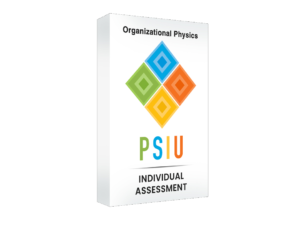
The PSIU Individual Assessment allows you to easily and quickly assess the style and role fit of your internal staff. It answers some universal questions posed by good managers: “Who’s on my team now? Are they happy and productive in their roles, and why or why not? If they’re not happy and productive, what should I do about it?”
The PSIU Individual Assessment creates a common frame of reference to help you better understand people and place them in roles aligned with their strengths and interests.
At the same time, the assessment also answers a primary question asked by anyone seeking greater self-awareness: “How can I better understand my own style and stressors, work more from my strengths, and better relate to others?”
The resulting report will allow you and your employee, in a non-threatening way, to do the following:
The bottom-line benefit of the PSIU Individual Assessment is that it improves mutual awareness of styles, needs, and communication patterns that lead to better working relationships. At the same time, it creates a common language among all your staff that leads to a better appreciation of the diversity of styles in your organization.
An additional benefit that may not be apparent right away is that when you assess multiple people within a team or workgroup using the PSIU Individual Assessment — and with a little practice — you can quickly assess the productivity and “chemistry” of an existing project team.
Understanding the assessment results allows you to answer two important questions that every team or project manager must be able to answer: “Does this team have the right mix of complementary styles in the right roles for high performance and success? And if not, what should I do about it?”
Specifically, assessing a team with the PSIU Individual Assessment allows you to better:
The bottom-line benefit is greater team synergy, overall improved performance, and increased mutual awareness of different styles, communication patterns, strengths, stressors, and needs within the team. It also highlights any gaps between team performance and manager expectations, while offering you a model for how to address them.
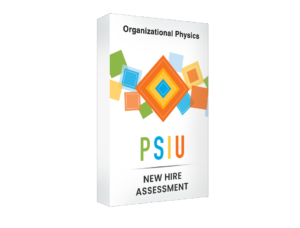
The PSIU New Hire Assessment allows you to easily assess external job candidates and run an effective hiring process. The purpose of the PSIU New Hire Assessment is to answer an important question posed by the hiring manager: “Who should I hire, and why?”
The resulting report and new hire process will allow you, the hiring manager, to do the following:
Like the other two products, the New Hire Assessment comes with instructional videos and other resources, as well as the companion e-book, How to Think About Hiring: Play Smarter to Win the Talent Game, which you can share with other staff to create a common language and culture around hiring.
The New Hire Assessment also includes New Hire Role Scorecards and pre-made Role Descriptions for new hires.
The bottom-line benefit is the ability to think about who to hire in a systematic way, avoid costly hiring mistakes, and find the best talent for your organization. When deployed across the board, the PSIU New Hire Assessment can transform the act of hiring into a sustainable competitive advantage.
Now that you’re getting a basic sense of the systems thinking approach behind the PSIU model and its applications, you’re probably wondering if you can put that information to good use. After all, what good is an assessment report if you can’t figure out what to do with it? This brings us to one my favorite parts about the PSIU Talent Management Suite: simple, actionable reporting.
First, let me give you some examples of what simple, actionable reporting is not. Take a look at three screen shots from some of the more popular style indicator reports that are based on academic psychology theory: The Predictive Index, Myers-Briggs Type Indicator, and Strengths Finder.
While these are all very interesting and potentially valuable style indicator reports, from a business management perspective, I’d like you to answer one question: How would you put this information to use in an actionable way and teach your staff to do the same? If you can answer that question, more power to you.
In contrast, while there are two different assessments within the PSIU Talent Management Suite — one for colleagues and one for prospective new hires — each report follows the same basic format: measure what style(s) is showing up in an employee, team, or prospective new hire; measure the style(s) they desire to express; measure the style(s) they are expected to express. Then pay attention to any gaps!

Is this the most advanced reporting in the world? Absolutely not. Does it address the needs of a business manager to quickly know what to focus on? Absolutely! To apply it universally? Yes. To communicate it easily to your staff in a way that values a diversity of styles? Yes. Is it fast? Yes. Is it accurate? Try it out and see for yourself.






The perceived risk to you is the time, energy, and a little bit of money required to learn the program. It’s easy to mitigate this risk with a free 30-Day test drive. We recommend you start by taking the PSIU Individual Assessment yourself and send the others to colleagues and prospective new hires. Doing so will provide rapid insight into individual role fit and improving team communications and collaborations. Check it out and see what comes back!
The real risk is allowing the status quo to continue. What’s the cost of having a disengaged or underperforming employee and not knowing it, or not knowing what to do about it? What’s the cost of making the wrong hire? Or the cost of not knowing what to expect from a project team or how to help them work well together? What’s the cost of allowing internal frictions within the organization to remain? I think you’ll agree with me that these costs can be pretty high.
Conversely, the ROI of getting it right is significant. When you have a universal language that works across functional boundaries, actionable reporting, and an assessment model designed for fast-paced environments, you can then take a systematic approach to strategic execution. You can then more easily transform breakdowns into breakthroughs and drive exponential business growth.
Since this is a new tool, you’ll need to take it for a test drive to really understand it and see if it’s right for your organization. After you register, we recommend that you launch a dummy survey, enter some sample data, and then close the survey to view the reporting. Thanks and we look forward to connecting with you in the members area! Click below to begin your 30-day free trial (new customers only). Cancel anytime.
Let’s build your high-performance organization together.
Organizational Physics® empowers CEOs and leadership teams to scale with clarity and confidence. By applying universal principles and proven frameworks, we help organizations improve internal performance, accelerate growth, and build resilient structures for the long term.
© Copyright Organizational Physics Inc.